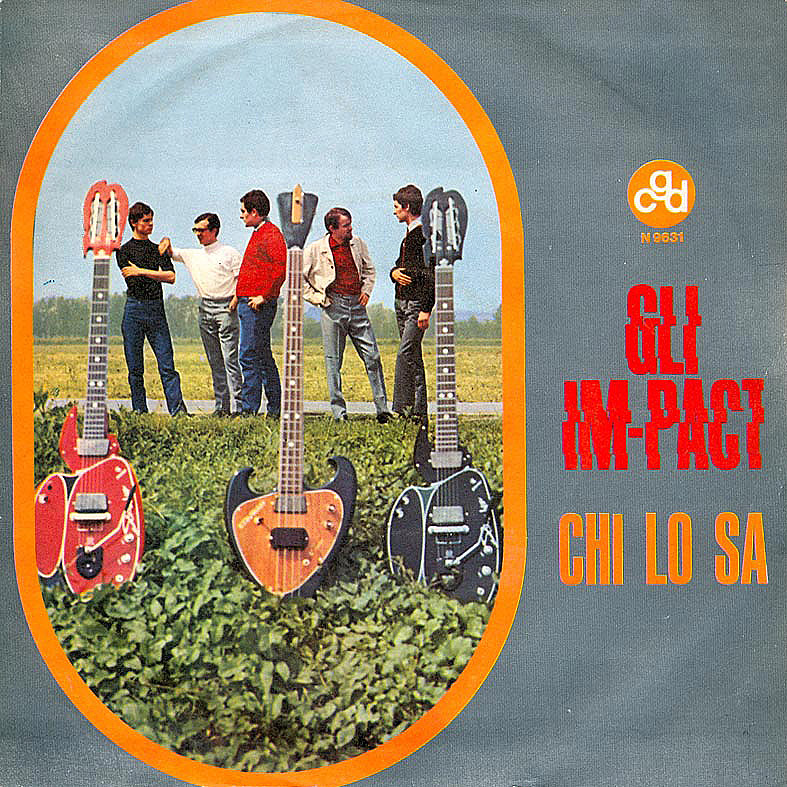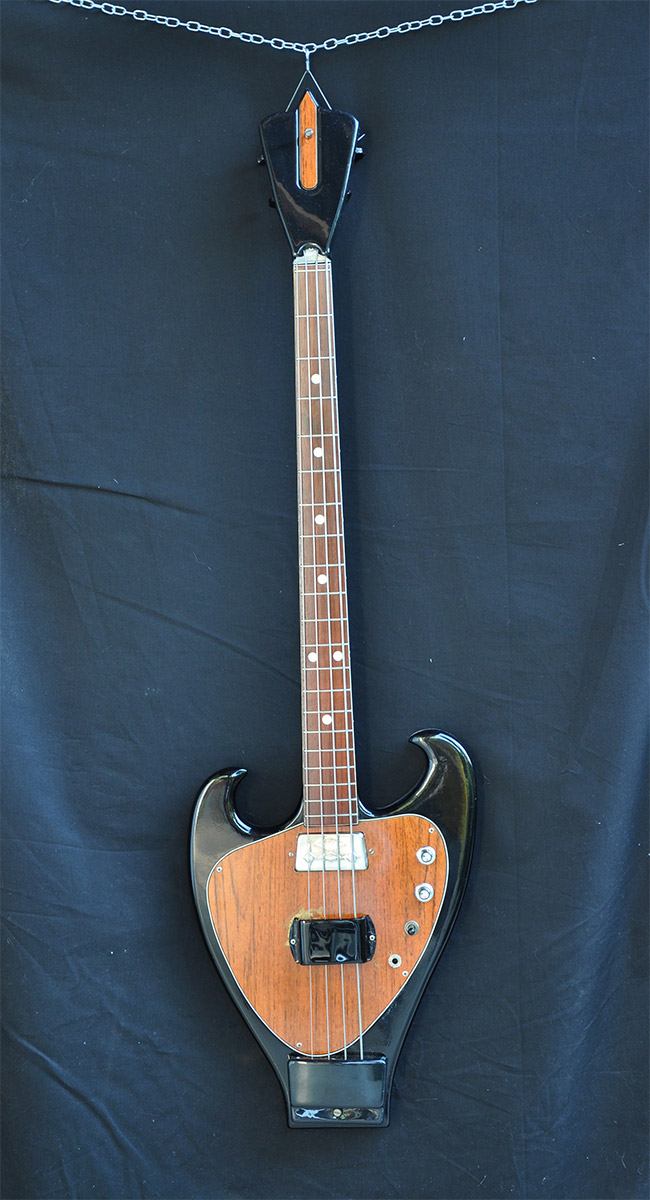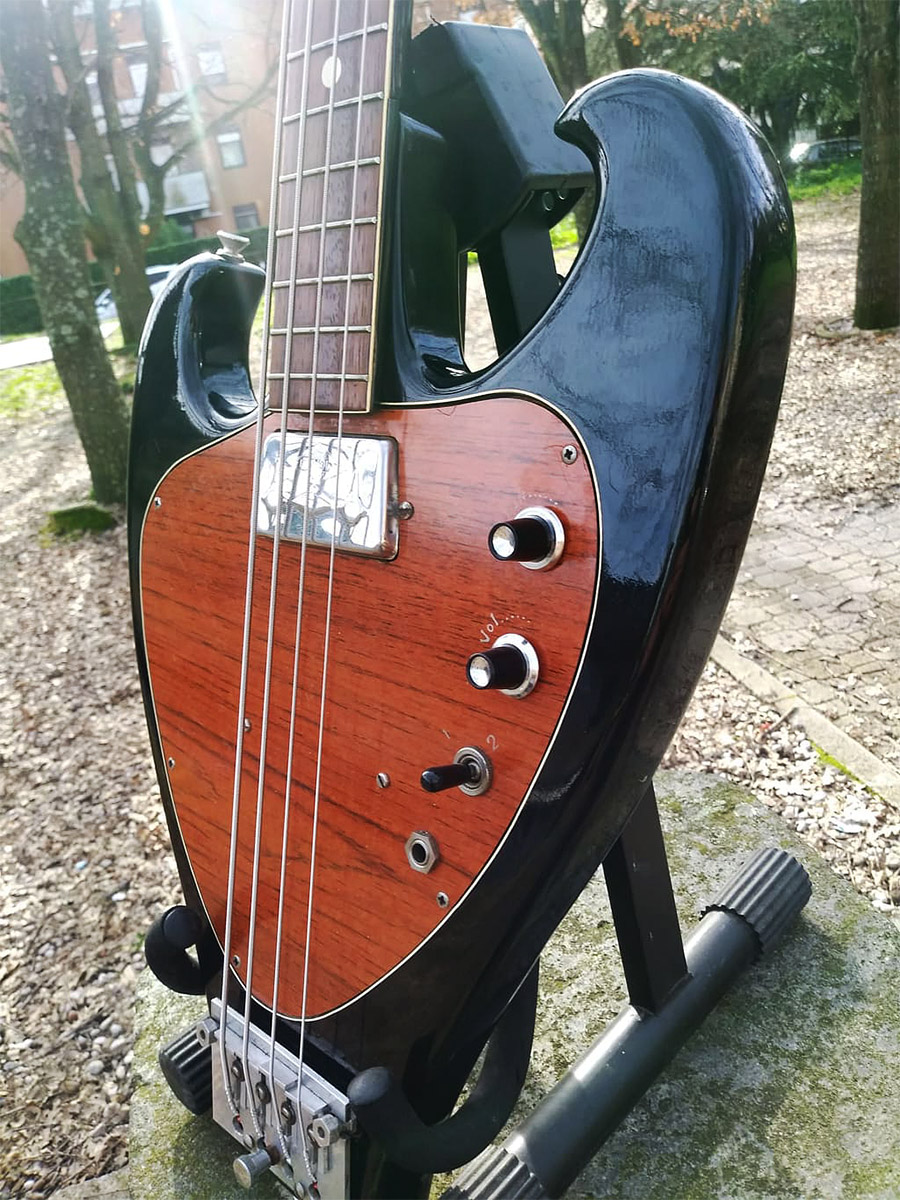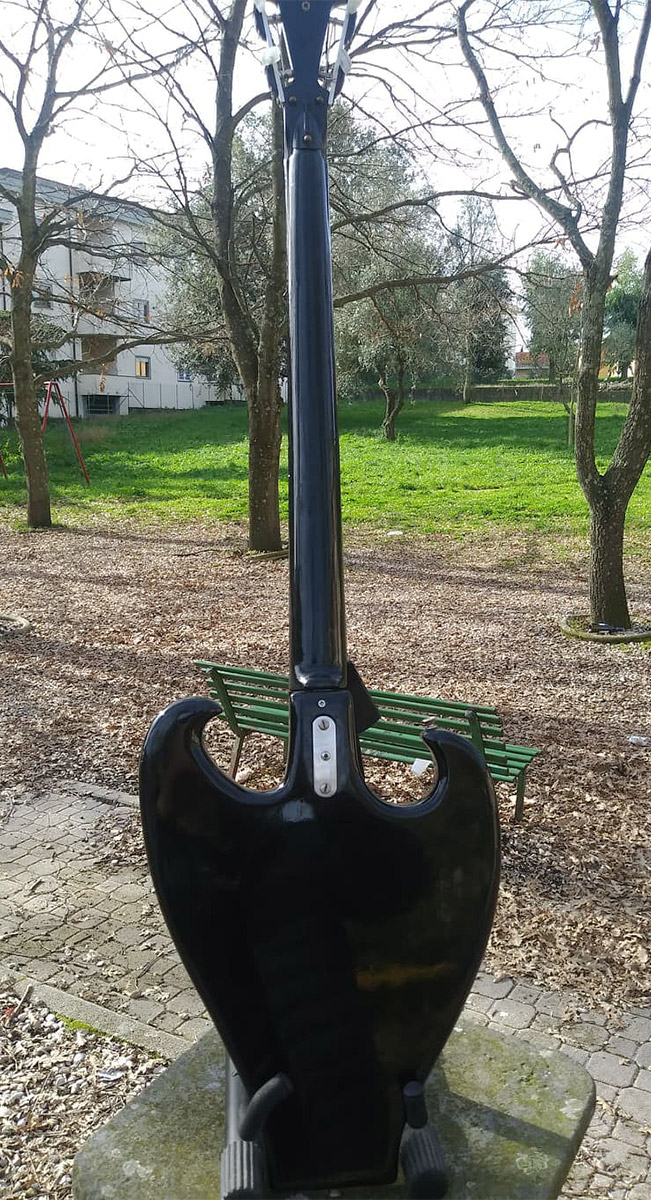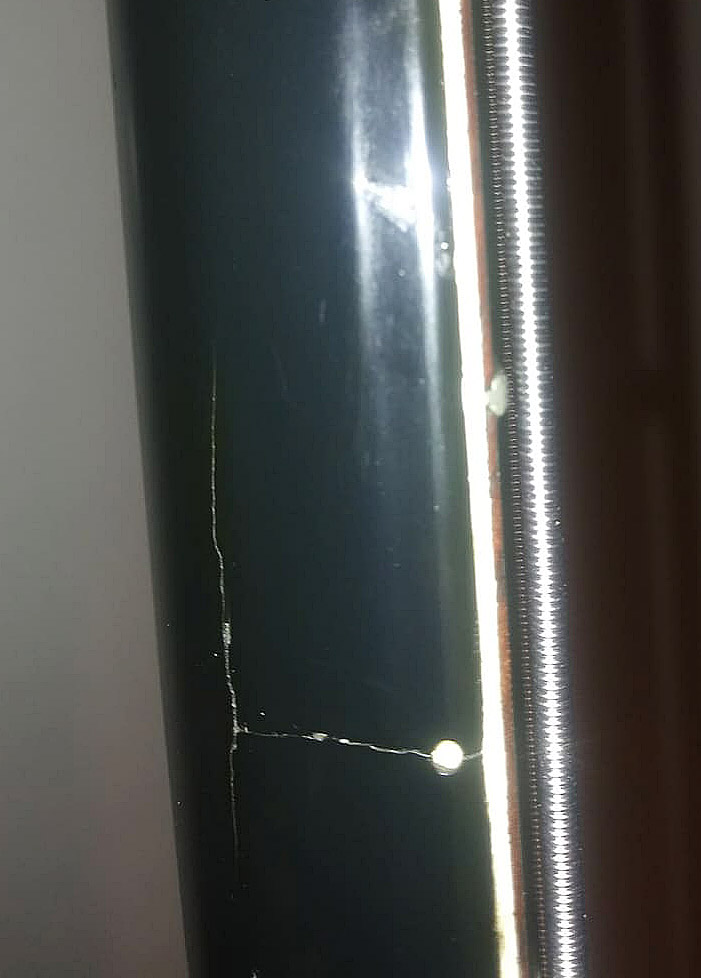”We are pleased to launch the Classic2vintage "showcase" with this very rare piece of Italian production: a splendid Etrurian bass by Wandrè.
Lorenzo
As many enthusiasts know, Wandrè was the nom de guerre of Antonio Pioli, the genius of Cavriago, a small town located in the Po valley.
An engineering student and artist, before being a luthier, Pioli began to take an interest in guitars in the mid-fifties and in 1959 he built a revolutionary round factory, in which his particular “lutherie” was based.
Mr. Wandrè was the creator of some of the most shocking modern instruments, both electric (mostly hollow body instruments but also various solid bodies) and acoustic (the splendid Naika double bass).
Most of his instruments feature innovative solutions such as the aluminum neck covered with PVC resin and special pickups and electronics made by Davoli with a coil that changes the impedance of the pickup, so as to be able to obtain two very defined timbres from a single pickup, as if the pickups were two.
Thanks to this device, in combination with the tone control, the sound nuances become multiple and surprising.
But what immediately catches the eye are the absolutely new shapes and the extremely artistic and colorful decorations of his instruments.
Cover of the single “Chi lo sa” (1966) by the Beat group Im-Pact, on which two Wandré Scarabeo stand out with an Etrurian in the middle
This is the case of the splendid Basso Etrurian that is the subject of this article: an instrument that, as the name suggests, takes inspiration from the Etruscan civilization, re-proposing a typical bucchero vase in shape and color and using the deep double-cut as a reference to the handles of the bucchero itself, also giving it a curved shape reminiscent of the Etruscan Litui.
But also the neck, whose scale is 854 mm, has a shape vaguely reminiscent of Bach’s Lituo, a legendary trumpet with an extremely elongated shape that has recently been rebuilt.
Early editions had a single neck pickup, tone and volume control, and an on-off switch that works on the pickup itself.
The wood used for the body is Ayous or Obeche (a type of Central African essence) and has a large tonal chamber which gives the bass an extreme lightness.
The pickguards could be in white, black or pink plexiglass, or in wood-colored formica with sometimes a decoration in the shape of a Florentine lily.
Later the Etrurian was made also with two pickups.
For more information, please refer to the excellent book “Wandré – The artist of the electric guitar” written by Wandré’s greatest expert, dr. Marco Ballestri.
The Etrurian Basso, conceived by Wandrè in collaboration with the young designer Stefano Beltrami, is undeniably an example of conceptual art, where the modern style is admirably linked to the past and the design fits perfectly with the ergonomics of the electric instrument.
The result is an unforgettable work, which will continue its life over time, passing into the hands of present and future musicians: what could we want more for art, if not its continuous renewal to remain eternal?
The Etrurian that we present in the following images is owned by the collector Alessandro Marziali, it is a first run with a single pickup and pickguard in Formica, without the typical plastic head cover, also designed by the designer Stefano Beltrami in collaboration with Wandré, which will be applied starting from the second half of 1965. There is instead the stylized piece on the top of the headstock.
3 screws have been added, one to reinforce the neck plate and two to move the pins for the strap. Over time and use, a crack has formed in the PVC cover of the neck, between the third and fifth frets.
Since it was not possible to replace the piece, given the almost unavailability of spare parts, and since the neck is excellently playable at present, it was preferred to avoid invasive interventions
The instrument has therefore been totally cleaned and serviced, with new strings added, it works perfectly and with the typical excellent playability.
For further information and contacts, please contact Alessandro at marziali[email protected]
Credits
Thanks to the Facebook group Wandré Guitars who, in the person of Dr. Marco Ballestri, kindly provided us with information and photographic material.
A dutiful thanks then goes to the creator of everything, that Wandré who left us a heritage of art and innovation that never fails to make us remain in amazed admiration.



